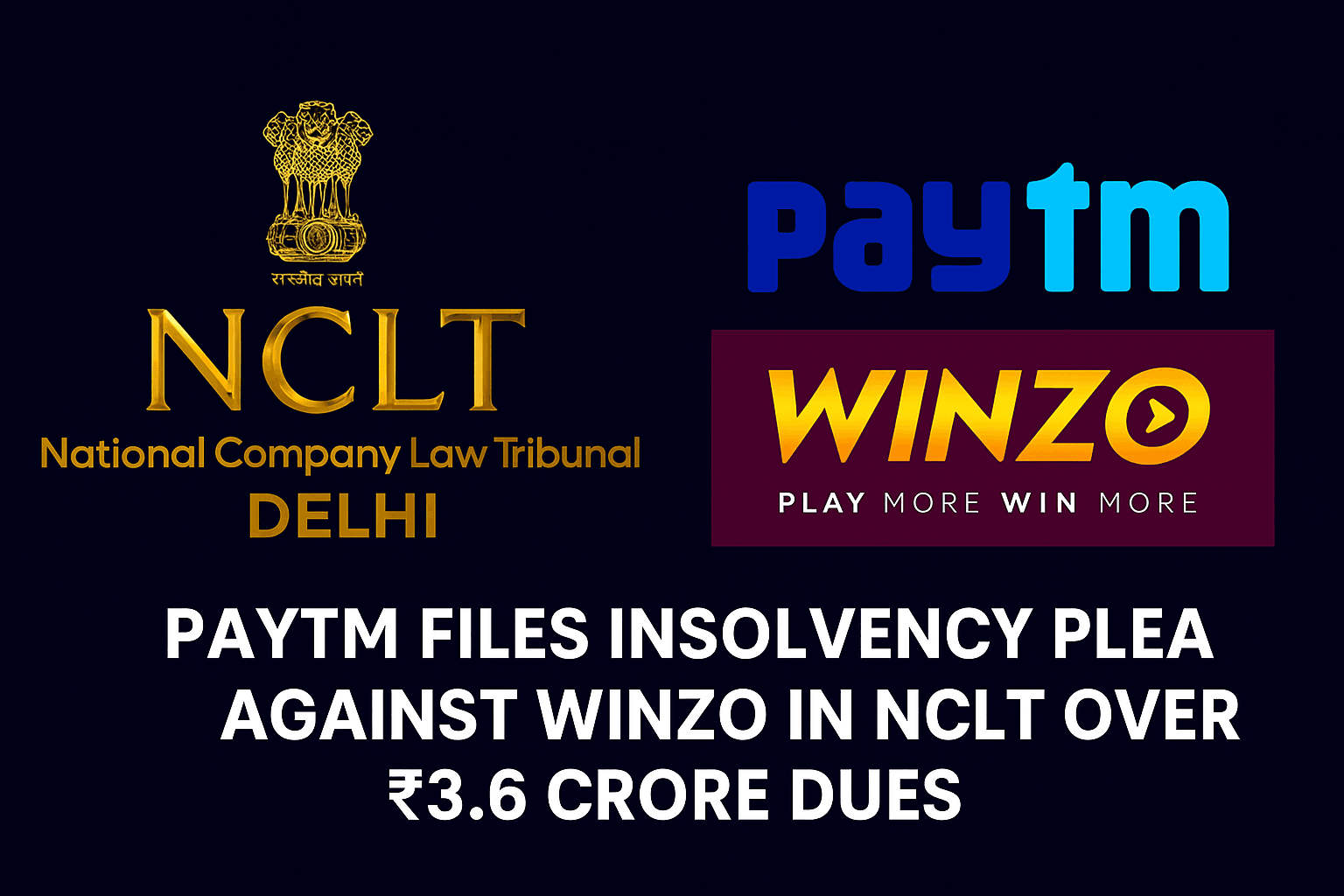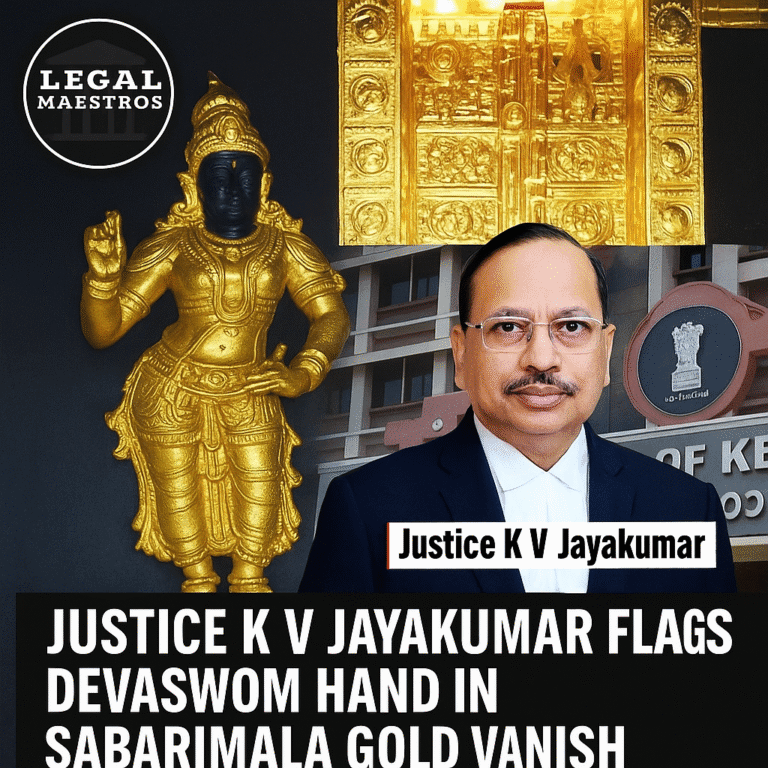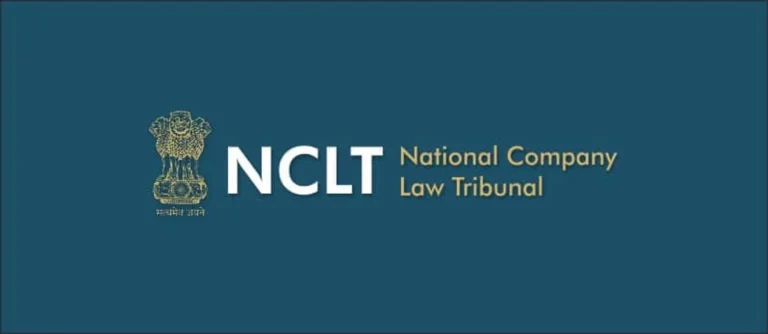
Mohak Mangal vs. ANI: Is Demanding Payment to Avoid Copyright Strikes a Criminal Extortion Offense Under BNS, 2023
Introduction
The advent of the digital age has brought about substantial changes in the procedures for the production of content, the distribution of content, and the preservation of content.
It is common for content creators to be required to navigate the complex terrains of copyright laws and digital rights regulations as a consequence of the rise of platforms such as YouTube, Instagram, and Twitter.
Significant issues have been brought to light about the boundaries between the enforcement of copyright and criminal extortion in the context of the Bharatiya Nyaya Sanhita (BNS), 2023. This is in light of a recent disagreement that included journalist Mohak Mangal and the news agency ANI.
For any queries or to publish an article or post or advertisement on our platform, do call at +91 6377460764 or email us at contact@legalmaestros.com.
The Controversy
Asian News International (ANI) sent a letter to Mohak Mangal, in which they said that he had violated their copyright by using their information in a manner that was not appropriate for the occasion.
An attempt was made by ANI to get money from him in order to prevent further breaches of copyright against his station. The impression that Mangal received was that this was a kind of compulsion, which may be seen as extortion.
He raised his concerns over the constitutionality of such demands from the point of view of the new criminal code legislation.
For any queries or to publish an article or post or advertisement on our platform, do call at +91 6377460764 or email us at contact@legalmaestros.com.
Extortion under the BNS, 2023
The Bharatiya Nyaya Sanhita, which was most recently revised in 2023, has a Section 308 that defines the offense of extortion. Extortion is defined as the act of intentionally causing another person to be fearful of being injured and then dishonestly encouraging them to pay valuable property or security.
This is the definition of extortion that is contained in the document. More specifically, the law categorizes extortion in a variety of different ways, depending on the kind and extent of the threat that is involved.
For More Updates & Regular Notes Join Our Whats App Group (https://chat.whatsapp.com/DkucckgAEJbCtXwXr2yIt0) and Telegram Group ( https://t.me/legalmaestroeducators )
For any queries or to publish an article or post or advertisement on our platform, do call at +91 6377460764 or email us at contact@legalmaestros.com.
Extortion Process Components That Are Crucial or Important
To be deemed extortion in line with Section 308 the perpetrator is needed to purposefully induce fear in the victim, which may be in the form of physical harm, damage to the victim’s reputation, or legal consequences. Examples of these types of fear include physical injury, damage to the victim’s reputation, and legal ramifications.
The instillation of fear must be of such a kind that it leads the victim to give up valuable assets, such as money or property, in order for the behavior to be regarded dishonest.
Legal Justification: In order to separate the demand that is being made from valid claims or dues, it is necessary for the demand to be devoid of any plausible legal basis.
For any queries or to publish an article or post or advertisement on our platform, do call at +91 6377460764 or email us at contact@legalmaestros.com.
Regarding the Mohak Mangal-ANI Case,
The question of whether or not the demand for money that ANI made in order to prevent copyright strikes was extortion is the most significant issue that develops in the context of the confrontation that is taking place between Mangal and ANI.
A Look at the Characteristics of the Danger: It is feasible that the communication from ANI may be seen to fall within the boundaries of typical copyright enforcement actions if it just served to notify Mangal about potential violations of copyright and provide an alternate method of payment. On the other side, if the communication contained threats of legal action or reputational harm that was unjustified in contrast to the stated infraction, then it may be perceived as instilling fear.
Those who own copyright have the legal right to protect their work and to seek compensation for inappropriate uses of their creations. This guarantees that the claim is valid and may be trusted. In the event that Mangal does, in fact, use ANI’s content without consent, the claim for payment that ANI will make in accordance with the law may be acceptable.
For any queries or to publish an article or post or advertisement on our platform, do call at +91 6377460764 or email us at contact@legalmaestros.com.
However, if the claim is either without merit or if it is exaggerated in order to collect money, then it is conceivable that the claim does not have any legal validity at all.
The objective that is the driving force behind ANI’s demand is a crucial aspect that may be considered an essential component of the context. Should the protection of intellectual property rights be the primary objective, then this action is in accordance with the processes that are followed in the legal system. Furthermore, if the purpose was to coerce payment via the use of threats and intimidation, then the conduct can be called extortion.
Interpretations of the law
Throughout the course of Indian history, Indian courts have probed into the difficulties of extortion in a number of different contexts. Examples of extortion on the part of the people concerned have been recognized by the courts as cases in which individuals used threats of legal action to extract money without a valid foundation. These cases have been called “extortion.” On a consistent basis, the primary points of attention have been directed on the presence of force, the lack of legal entitlement, and dishonest will.
For any queries or to publish an article or post or advertisement on our platform, do call at +91 6377460764 or email us at contact@legalmaestros.com.
Effects of extortion
When it comes to understanding the laws that govern extortion, the digital world poses a set of challenges that are not seen in other environments. Because of the mechanisms that are offered by platforms such as YouTube, such as automated copyright strikes, content creators sometimes find themselves in a tough position when they are confronted with takedown requests.
Despite the fact that those who possess copyrights have rights to which they are legally entitled, the use of these methods to compel writers to make payments that are not warranted may cause the lines between enforcement and extortion to become blurry.
There is the potential for legal repercussions to take place. The court would most likely explore the following conditions if Mangal were to initiate legal action alleging that he was subjected to extortion:
For any queries or to publish an article or post or advertisement on our platform, do call at +91 6377460764 or email us at contact@legalmaestros.com.
To assess whether or whether there were any threats or undue pressure, the papers that were exchanged between ANI and Mangal will be investigated. This will be done in order to gather evidence of coercion.
Mangal’s use of ANI’s content would be evaluated by the court to see whether or not it was an infringement, and whether or not ANI’s claim could be lawfully supported. At this point, we would refer to this as the “validity of the copyright claim.”
On the other hand, in order to determine whether or not dishonest inducement was present, it would be necessary to take into account the acts and intents of both parties.
For any queries or to publish an article or post or advertisement on our platform, do call at +91 6377460764 or email us at contact@legalmaestros.com.
Given the Bharatiya Nyaya Sanhita, 2023, the intersection of the enforcement of copyright and extortion creates a legal landscape that is fraught with complexities. Although the owners of the rights have the authority to take whatever actions they see fit, the steps that are taken to protect intellectual property must be in compliance with both legal and ethical standards.
Having clear principles and fair procedures is of utmost importance when it comes to the administration of digital content, as the Mangal-ANI case demonstrates. Additionally, it is vital that legal frameworks adapt in parallel with the continual development of the digital environment in order to ensure the protection of rights without allowing for the employment of tactics that are coercive.




![Research Assistantship @ Sahibnoor Singh Sindhu, [Remote; Stipend of Rs. 7.5k; Dec 2025 & Jan 2026]: Apply by Nov 14, 2025!](https://legalmaestros.com/wp-content/uploads/2025/11/Gemini_Generated_Image_s0k4u6s0k4u6s0k4-768x707.png)
![Karanjawala & Co Hiring Freshers for Legal Counsel [Immediate Joining; Full Time Position in Delhi]: Apply Now!](https://legalmaestros.com/wp-content/uploads/2025/11/Gemini_Generated_Image_52f8mg52f8mg52f8-768x711.png)
![Part-Time Legal Associate / Legal Intern @ Juris at Work [Remote]: Apply Now!](https://legalmaestros.com/wp-content/uploads/2025/11/ChatGPT-Image-Nov-12-2025-08_08_41-PM-768x768.png)
![JOB POST: Legal Content Manager at Lawctopus [3-7 Years PQE; Salary Upto Rs. 70k; Remote]: Rolling Applications!](https://legalmaestros.com/wp-content/uploads/2025/11/ChatGPT-Image-Nov-12-2025-08_01_56-PM-768x768.png)